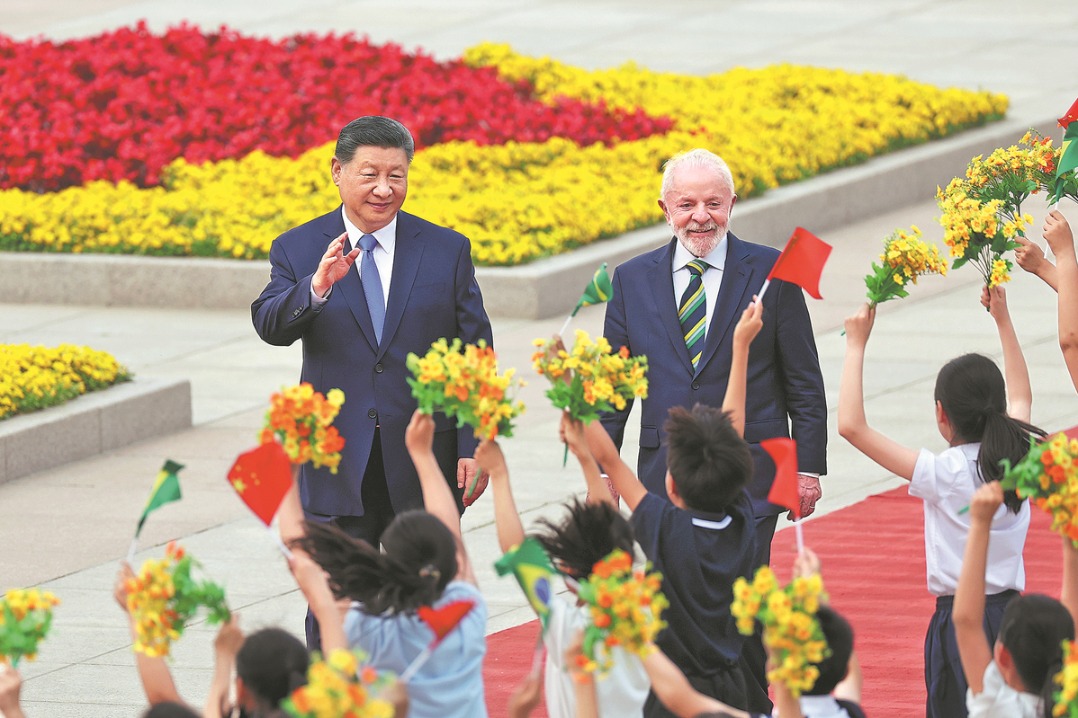CELAC can lead revolution in carbon finance


The road to solving the global climate crisis runs through the forests and renewable energy resources of Latin America and the Caribbean. As the world inches closer to climate tipping points, the Latin American and Caribbean region holds huge untapped potential in not just terrestrial carbon sinks but also pioneering a new financial architecture that rewards environmental stewardship.
Brazil will host the 30th Conference of the Parties to the United Nations Framework Convention on Climate Change (COP30) in Belem in November at a time that is ripe for transformative leadership, giving Brazilian President Luiz Inácio Lula da Silva the chance to emerge as not only a champion of the Global South but also a global climate statesperson.
The LAC countries have long waited for the developed world to fulfill their climate finance promises. But with the Global North faltering on its financing commitments — failing to pay the $100 billion per year pledged at COP15 in Copenhagen in 2009 and likely to do a repeat with the $300 billion promise at COP29 in Baku, Azerbaijan, last year, the LAC countries must chart their shared course.
By embracing multilateralism, harnessing South-South, bilateral and triangular cooperation, establishing research and development centers, and using innovative carbon finance vehicles such as the proposed Tropical Forest Forever Facility, the region can transform carbon credits into tangible, sustainable development dividends. Under Lula's COP30 presidency, the region has the opportunity to initiate a new era of global carbon financing, proving that tropical forest conservation is an investable class of sovereign asset vital to a fairer and more resilient future.
If structured efficiently and fully adopted at COP30, the proposed TFFF could serve as a cornerstone of this vision. It has the potential to allow countries with rainforests and sovereign carbon credits — fully verified under UN mechanisms — to swap them for concessional finance, invest in green bonds, transfer for compliance or fund domestic climate action initiatives. Such a mechanism not only aligns with Nationally Determined Contributions — climate action plans submitted by individual countries to the UNFCCC under the Paris Agreement — but also with performance payments, markets and transparency under the same agreement. It offers the potential to unlock fresh carbon capital where it is most needed.
Honduras is an early mover in this emerging climate finance space. During Honduran president Xiomara Castro de Zelaya's tenure as president pro tempore of the Community of Latin American and Caribbean States (CELAC), Honduras became the first country in the world to post sovereign carbon credits under the UN's Reducing Emissions from Deforestation and Forest Degradation framework for 2023, totaling 11.8 million credit units of carbon dioxide, fully compliant with the Paris Agreement for the 2021-23 period.
These credits represent forest conservation and restoration efforts that have climate, biodiversity, and sustainable development benefits. Honduras now faces a unique opportunity: it could allocate 50 percent of its UN-verified carbon credit revenues to forest preservation, sustainable agriculture and food security programs while securitizing the remaining 50 percent to issue green bonds. These bonds could finance cleaner energy (solar and wind) infrastructure and grid-scale energy storage systems — a dual investment strategy that combines immediate emissions reductions with long-term climate resilience and energy independence.
This sovereign carbon strategy, as a smart policy, is replicable across the region as well as the world. Many countries across the region — from Colombia and Panama to Suriname and the Dominican Republic — have similar forest assets and climate ambitions. With a scalable framework like the TFFF, carbon finance can evolve from fragmented bilateral deals to a cohesive financial instrument to bridge the monumental climate debt developed countries owe to rainforest nations which have collectively received payments for only 4 percent of the 13 billion tons of CO2 emissions they have removed from the atmosphere over the past 20 years. Hence, pragmatic cooperation is crucial in this regard.
With the US' withdrawal from the multilateral climate change arena, BRICS, Canada, the European Union and Japan have emerged as natural, dependable partners for LAC countries, offering infrastructure, cleaner energy technologies, and much-needed carbon finance.
If a fair opportunity cost of $28 per ton of CO2 removed — less than half the price European polluters pay in the EU Emissions Trading System — is applied, the Global South would receive $350 billion in exchange for the climate stabilization services it has already rendered. Given the Brazilian ecosystems' critical role in global climate stability and the country's renewed climate leadership under Lula, Brazil is the natural convener for this initiative.
With regard to South-South cooperation, over the past decade, the China-CELAC Forum has matured into a multidimensional platform, spurring trade, renewable energy projects and joint climate initiatives.
The path is clear: by leveraging sovereign carbon assets, deepening multilateralism and cooperation, building and improving research and development centers, and using carbon finance to help the LAC countries, we can build a fairer, greener and more vibrant future. In doing so, Latin America and the Caribbean will not just participate in carbon finance; they will lead it.
The author is former minister of the environment of Panama, regional director of the Coalition for Rainforest Nations, distinguished adviser to the Integrity Council for the Voluntary Carbon Market, and recipient of Harvard University's Howard T.Fisher Prize in Geographic Information Science. The views don't necessarily reflect those of China Daily.
If you have a specific expertise, or would like to share your thought about our stories, then send us your writings at opinion@chinadaily.com.cn, and comment@chinadaily.com.cn.































